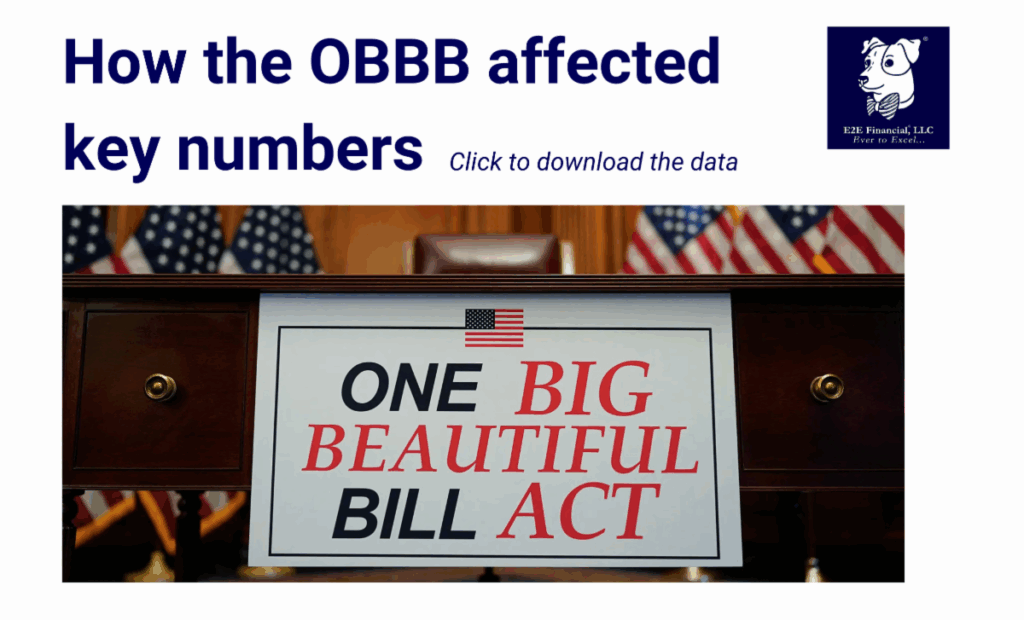
Earlier this year, we sent you our annual Key Financial Data card to help you stay current on tax limits, retirement thresholds, and other important planning numbers. Normally, that card remains unchanged for the full year—but there is always the chance of mid-year legislation.
With the recent passage of the One Big Beautiful Bill (OBBB), several significant tax law changes are now in effect for the 2025 tax year. To help you stay informed, here is an updated version of the Key Financial Data card, reflecting these mid-year updates.
Here are a few key highlights you should be aware of:
1. Expanded Standard Deduction
Starting in 2025, the standard deduction increases to:
- $31,500 for joint filers
- $23,625 for head of household
- $15,750 for single filers
2. Enhanced Senior Deduction
In addition, individuals ages 65 and older are now eligible for a new bonus deduction of $6,000 per person, potentially bringing a couple’s total deduction up to $46,700. This change could significantly reduce or even eliminate federal taxes on Social Security benefits for many retirees. The deduction phases out gradually for higher-income households.
3. Child Tax Credit Increased
The Child Tax Credit has been raised to $2,200 per child, with both the maximum and refundable amounts indexed for inflation moving forward. While not as expansive as previous temporary increases, this remains a valuable planning tool for families with dependents.
These changes may impact your financial plan. We recommend you reach out to your CPA to review. If you need our assistance (and/or a CPA recommendation), please don’t hesitate to reach out.
We’re happy to talk through how this new legislation may affect you and discuss any updates to your plan.
Plus, your weekly market update is here.




